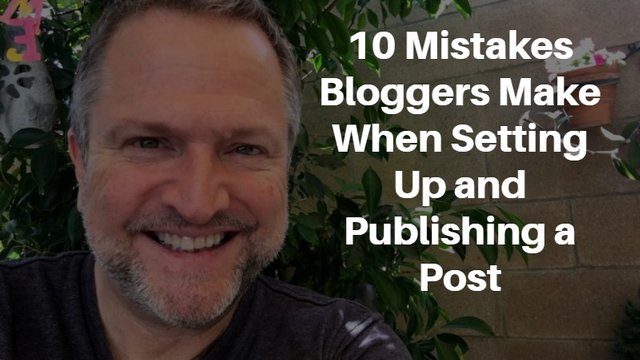
If you’re doing some sort of daily content (and you SHOULD be) a blog (in addition to Steemit) is a great way to house that content, whether it be a straight blog post, quotes (or a series of quotes) video or audio.
However, I see a lot of people making basic mistakes on their blog posts.
Here are the most common ones I see and how you can fix them:
(NOTE: Not all of these can be applied to your Steemit posts)
Set Up Your Permalinks
If you use the standard WordPress URL structure your posts will look something like this: http: //myblog.com/?p=123 This is not very SEO friendly and this is the first thing you should change when you set up your blog. Go to ‘Settings’ >> ‘Permalinks’ and use one of the structures that uses words instead of numbers.
Use Your Main Keyword in the URL
Now that you’ve set up your permalinks, use the main keyword that your post is about in the URL. Example: If your main keyword is ‘watermelon cutting tips’ then your URL will be something similar to http: //myblog.com/watermelon-cutting-tips As discussed above, this helps with SEO.
Use at Least One Image in your Post
Using one (or more) images on your posts does 2 things: It helps SEO and gives the reader a visual cue on what the post is about. For SEO, Google likes to know that a post has an image.
Put Your Keyword in the ‘Alt’ Tags of Your Image(s)
Putting the keyword in the Alt tags of your images helps Google determine what the image is about. It also helps SEO. So you want to insert your keyword in there. Find the Alt tag field when you go in to your image editor and pop it in there.
Put Your Keyword in Your Meta Description
Firstly, some people don’t even write a Meta Description. Google will pull the Meta Description and use it as the snippet in their search results so you want to make sure you write one…preferably with a call-to-action. Then, just work your keyword in there (yep…helps with SEO).
Use a Quality SEO Plugin
An SEO plugin can make all of the above a lot easier. The best one (in my opinion) is Yoast SEO. They have a great free version. Install it and use it.
Use a Page Cache Plugin
WordPress uses a database structure whereby when someone visits your page, their computer calls up all the files it needs to display the page (text, images, video, etc…). The problem is, when you start getting more traffic, each time a page is ‘called’, WordPress has to fetch all those files each time. This can (will) really slow down your site. Using a page cache plugin ‘remembers’ and ‘stores’ files fetched from a page so the database doesn’t have to call the files each time…significantly speeding up your site. There are several different plugins for this and the one I use is W3 Total Cache.
Use H1, H2 and H3 Tags in Your Posts
Heading tags (H1 etc….) are very useful to separate sections of your post and describe each section creating a better user experience. But you can also put your keywords in these headings as Google gives slightly extra weight to SEO when you do so.
Don’t Stick 300 Tags in Your Posts
Tags used to be really popular in blogging…until it became apparent that using too many could hurt your rankings. If you do use tags, keep it down to 3 max.
Syndicate Your Posts to Your Social Media Channels
Once you start to build up a lot content, you’ll want to syndicate it so that older content keeps getting seen. A great practice is to syndicate your posts to Twitter.
There! Doing the above will set you above 90% of the would be bloggers out there. All of them added together really will improve your visibility online.
Get More & Higher Upvotes: Steemfollower
Thanks for the tips!
Downvoting a post can decrease pending rewards and make it less visible. Common reasons:
Submit